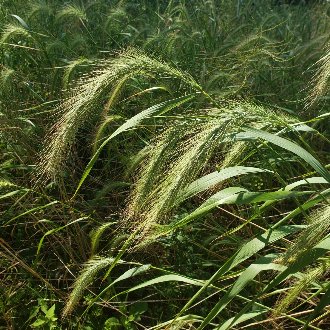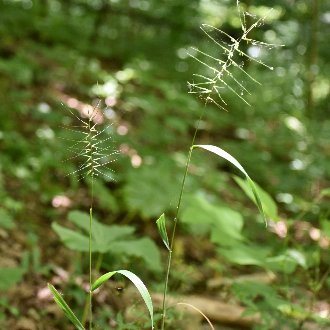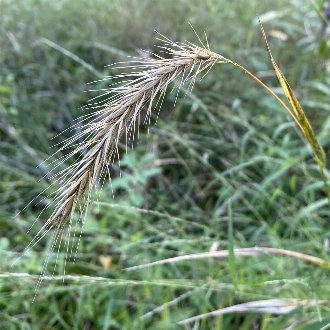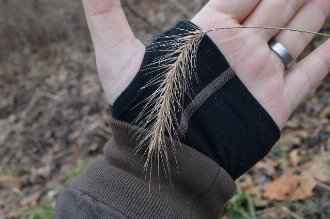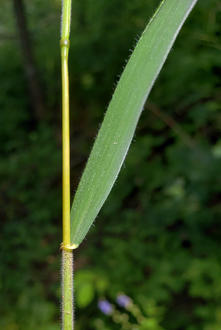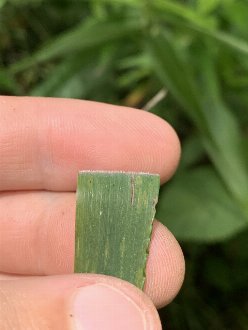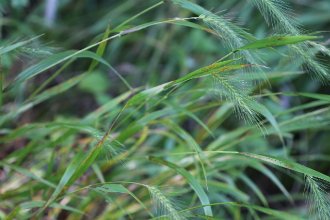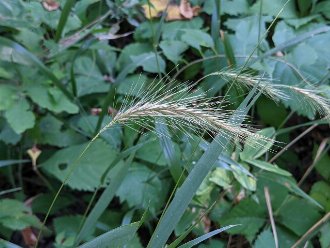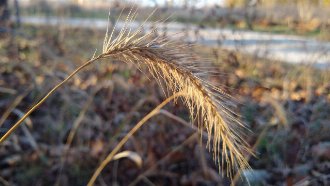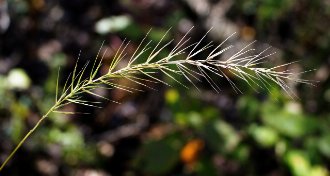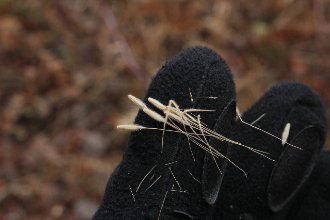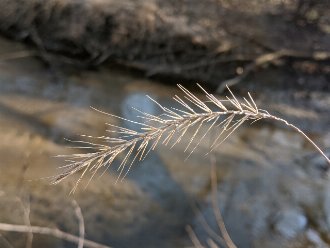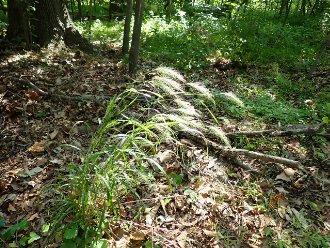Silky Wild Rye (Elymus villosus Muhl. ex Willd.)
Also known as hairy wildrye, silky wildrye.
↑Summary
A perennial, cool-season bunchgrass native to eastern to central North America.
↑Range - Expand
| Legend | Color |
| Native | |
| Native or Not Present |
This tentative map is based on our own research. It may have limited data on Canada and/or Mexico, and there is some subjectivity in our assignment of plants as introduced vs. expanded. Read more in this blog post.
Although this plant occurs somewhere in each of these regions, it may only occur in a small part of some or all of them.
↑Similar Plants
↑Habitat
In the heart of its range, centering around Illinois and regions east, west, and slightly north, this species is common and found in a wide range of partly-wooded habitats including open woodlands, woodland borders, rocky wooded slopes, savannas, woodland clearings, and thickets. In the northeast of its range, this species becomes uncommon to rare, and mostly limited to floodplain forests, riverbanks, rich woods, and coastal areas. Throughout its range it is mostly limited to higher-quality, intact woodlands, and is less tolerant of disturbance and habitat degradation.
It prefers rich, well-developed, loamy soils, but tolerates a range of moisture conditions from moist to slightly dry, and a range of lighting conditions from partial sun to light shade, occasionally found in full sun in the north of its range. Especially in the north of its range, it can also tolerate rocky and/or sandy soils. It is more frequent on calcareous soils and usually absent from acidic soils. In the coastal plain, where it is less common, it is often found on shell marl soils (derived from decomposing mollusk shells.)
The Elymus species (wild ryes) often occur together in the same habitats. Relative to E. riparius and E. virginicus, this species is less tolerant of fine-textured soils, poor drainage, and disturbance, but more drought-tolerant, and it is also less tolerant of full sun and soil acidity than E. virginicus. It is much less drought- and sun-tolerant, and more demanding of good soil texture and fertility, relative to E. canadensis, but more shade tolerant. It is slightly more drought-tolerant and less shade-tolerant than E. hystrix. It is much less tolerant of acidic soils than E. glabriflorus. Relative to E. macgregorii it is more tolerant of drought, poor drainage, and rocky soils, but less tolerant of degraded habitats.
We could not find specific research on this species' fire tolerance, but given its abundance in dry-mesic oak forests and savannas near the border of the great plains, which are fire-prone habitats, and its relative scarcity in the more humid, less fire-prone east, this species likely benefits from periodic fire, which may serve to maintain its optimal lighting conditions.
↑Life Cycle
Like the other wild-ryes, this species is a perennial, cool-season grass with a clumping habit. Growth happens primarily in late winter through spring. This species flowers on the early side for the Elymus genus, with seeds maturing in early to mid summer. Unlike others of its genus, this species tends to shed its seeds very early, sometimes when the spike is still green.
We could not find information on this species' lifespan.
↑Faunal Associations
The foliage is eaten to an extent by deer and elk, but is less attractive even than other Elymus species because of the pubescence on the leaf surfaces. Livestock can eat the foliage as well, particularly before the seeds mature, but the mature awns can injure their tongues.
The larvae of the false wainscot (Leucania pseudargyria) feed on this species along with various other grasses. The leafhopper Laevicephalus orientalis also feeds on this and other Elymus species, and the Monhegan grass leaf beetle (Chalepus walshii) feeds on the tip of the leaf blades of this species and various other grasses.
↑Uses
This species has been seeded into areas as erosion control, especially along highways, usually in a mixture with other grasses. Its tolerance of a wide range of moisture conditions, relatively deep roots, and large root mass makes it effective for this purpose. It is usually combined with Elymus virginicus and Elymus canadensis which often establish more readily along roadsides where soils are often poorer. Its inclusion in mixes can improve the effectiveness of these seedings as, where it does successfully establish, it often establishes greater root mass, and it can be longer-lived than E. canadensis.
Silky wildrye is also sometimes included in wildflower seed mixes, where it tends to grow well and look aesthetically pleasing when grown amongst flowers.
It is also occasionally used in gardens and landscaping. Although it is easy to grow in a garden setting, its use is limited by its tendency to lean or flop over when unsupported by other vegetation, and it is usually relegated to the backs of beds or more naturalised plantings.
↑Links & External Resources
• Elymus villosus (Silky Wild Rye) | Illinois Wildflowers (About This Site)
• Elymus villosus (hairy wildrye) | USDA PLANTS Database (About This Site)
• Elymus villosus | Go Botany (About This Site)
• Silky Wild Rye | iNaturalist (About This Site)
• Elymus villosus | Biota of North America Project (BONAP) (About This Site)
• Elymus villosus | NatureServe Explorer (About This Site)
• Elymus villosus | Flora of North America (About This Site)
• Elymus villosus | Missouri Plants (About This Site)
• Hairy Wildrye | Maryland Biodiversity Project (About This Site)
• Elymus villosus Muhl. ex Willd. (Hairy Wild Rye, Downy Wild Rye) | Digital Atlas of the Virginia Flora (About This Site)




